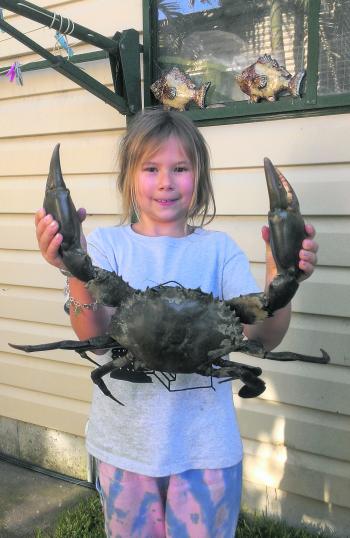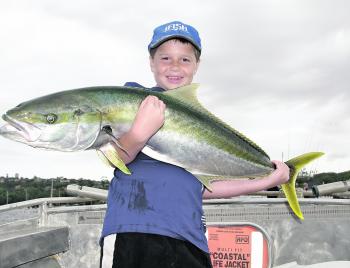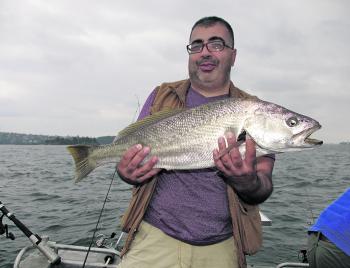We have been getting some spectacular king fishing of late, and hopefully with the late start to the season we will get a late finish, taking the warm water and kings right through to May. This is the time of year for bigger than average kings so you need to expand your tactics. While I’m generally a strong proponent of fresh squid for bait, big kings do develop a hankering for garfish at this time of year. This is not surprising given that we get a good run of gar in the harbour about now.
You will find gar in places like Quarantine and Watsons Bay, and around Sow and Pigs reef. A bit of bread or pellet berley mixed with tuna oil will get them in behind the boat in no time. My favourite gar bait is pilchard gut on a short shank no 12 or 14 hook under a light quill float. I suspend the bait about 30cm under the float with no lead, with the lightest line possible. To keep your garfish alive you will need a good sized, well aerated (preferably circulating) bait tank.
One of the most successful and spectacular ways to fish the live gar is to swim them out under a bobby cork with no lead. You can get huge surface strikes this way! The rig is simple and consists of a 1m mono trace with a bobby fixed at the point where the trace meets the main line. No lead is used so the gar, pinned on a 6/0 octopus style hook, swims on the surface. Pin the gar under the lateral line just behind the anal fin. By having the hook on the underside you naturally keel the bait. A gar hooked above the lateral line will have to constantly fight the hook and tire more quickly. When it does tire the hook weight will pull the gar upside down and it will die.
An alternate rig is to drop the bobby cork and let the gar swim free. This is a great natural presentation with the disadvantage of not always knowing where your bait is and resultant tangles. If you are going to use this method, you will need to keep a constant check on your bait’s position.
While gar is great bait at this time of year don’t write off the squid. A big, whole, live squid fished deep will take its share of big kings and still rates as the number one bait with the advantage of picking up a stray mulloway.
Thanks to a wet summer, April through to July should be a bumper for lure throwers in the upper reaches. Mulloway follow the mullet run back upstream at this time of year and don’t seem to mind the cooling water.
Bridges at night are top mulloway spots. These fish are an open water ambush predator, using dirty or dark water to hide in (quite different from structure-oriented predators like flatties, who bury in the sand, or bass who hide in a snag or weed bed).
Lights on a road bridge throw light onto the water next to the bridge and cast a shadow of the bridge under it. This sets up three ideal situations for mulloway to feed. First of all, the light water attracts bait like squid and mullet. Secondly, the shadow gives the mulloway a place to hide and mount their attack, and thirdly the pylons create a pressure wave for the mulloway to rest in while they aren’t attacking.
The scenario is like this. Bait swarms in the light water. Mulloway hide in the dark water and every now and then burst into the light water to grab a feed. Mulloway and the bait will always face into the current and the bait at night is generally on the surface. From all this we can see that the best way to catch mulloway around a bridge at night is with surface lures/poppers, on the side of the bridge that the current is flowing onto and right along the line where the bridge casts a shadow on the water.
To the surprise of many, Sydney supports a healthy mud crab population. Any estuary with a few mangroves will hold crabs including Parra River (check dietary advice), Georges River, Middle Harbour and most of the Hawkesbury tributaries. I’ve even seen them taken from spots as obscure as golf course ponds. I’ve caught some good-sized ones from Berowra Creek over the years but nothing could have prepared me for the freak that my mate Jack Hannan turned up with at a recent BBQ. It was truly massive and equal in size to any I’ve seen in the tropical north.
Methods of capture include wading at night with a light and traditional traps. You will do much better with fresh bait in your trap rather than stinky baits, despite the myth. Good baits include mullet and mahimahi frames, and any other oily type fish.
Getting your traps stolen or run over can be a problem in Sydney so place them wisely. It’s not a problem unique to Sydney either. On a recent family holiday to South West Rocks, ratbag locals stole seven of our family’s eight traps. When I reported it to local Fisheries they assured me that the locals don’t specifically target tourists – they rip each other off too. However, in the same week that mine went missing, the locals’ traps in the same vicinity never got touched.
• If you are interested in doing a guided fishing trip on Sydney Harbour with Craig McGill please call 0412 918 127 or email --e-mail address hidden--
Reads: 2815
Freya with a huge Sydney mud crab.

Big kings take a liking to gar at this time of year.

Mulloway should be at their best now.




